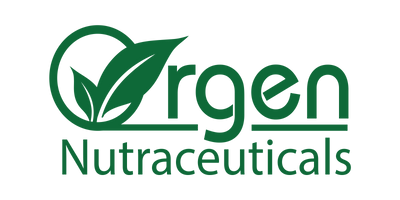
The Global Tradition of Herbal Medicine
Anthropologists have found that nearly every civilization that has ever existed on this planet has had their own tradition of prescribing herbs as treatments for different physical and psychological ailments. From as early as 3,000 BCE, artifacts detailing the customs of different tribes and cultures reveal that certain botanicals were commonly used as healing treatments.
Several of these herbs have been used in multiple cultures for the same benefit, which is why many are still trusted for their purpose. A growing number of consumers today are choosing to turn away from the laboratory chemicals produced by big pharma companies- opting to give herbal remedies a try instead.
The number of herbs found in nature seems so endless that it can be hard to choose the right one to address your health concerns. Contacting a naturopathic doctor would be a great start to your wellness journey if you are curious to give herbal medicine a try. These practitioners will be able to not only recommend which herbs would be most beneficial to your personal health, but also help you with other methods of healing such as massage, meditation, and yoga.
So, what are the most popular herbs used worldwide? Here are 5 of the big ones:
1. Rhodiola
Rhodiola Rosea grows naturally in cold, mountainous regions and sea cliffs. It is found in 3 different continents: Asia, Europe, and North America. Relics from the Vikings, ancient Chinese, Siberians, and the indigenous Inuit people of Eastern Canada show that they all used this bright yellow flowering plant in their medicinal practices. Each of these tribes used Rhodiola to boost energy, improve focus, and reduce mental fatigue. Consumers today use it for the same purpose; however, we know something that those primitive cultures did not- that Rhodiola is also a powerful antioxidant. It contains compounds that help fight against the oxidative damage done by free radicals.

2. Ashwagandha
Unlike Rhodiola, Ashwagandha enjoys warm climates and dry, dusty soil. It is no surprise then that this fruit-bearing shrub has been venerated by cultures in the desert regions of the Middle East, India, China, and Africa for centuries. The parts of the Ashwagandha plant have been used in numerous ways. Cultures inhabiting the Arabian Peninsula, India, Nepal, and Eastern China all used this plant for its benefits on vitality and mood. Ashwagandha was and is still known to promote a healthy mood balance, aid sleep, improve memory, and support cognitive health. Meanwhile, ethnic groups in Botswana and Namibia created pastes from the root to heal various skin ailments.

3. Ginseng
There are several distinct species of Ginseng that naturally grow all around the world. In fact, Ginseng is currently considered to be the most cultivated herb worldwide. It is estimated that over 80,000 tons of Ginseng are produced each year. Panax Ginseng (also known as Asian Ginseng) can be found in Northern China and Korea, where it has been used in Chinese traditional medicine dating back at least 2,000 years. American Ginseng naturally thrives in the Appalachians, Ozarks, Rocky Mountains, and parts of Southeast Canada. This herb’s tuberous root was harvested by many different Native American tribes for hundreds of years before the European expansion into the Americas began. All types of Ginseng have one thing in common: their wonderful effect on energy and vitality. Ginseng helps enhance physical performance and improve concentration. It has also been used to increase peripheral circulation, which may help support sexual function and libido in men and women.

4. Turmeric
Herbologists disagree whether Turmeric was originally cultivated in Eastern China or in the Indian subcontinent. This tuberous plant is known for its flagrant orange colour and zesty flavour, which made it an incredibly desirable product in the ancient spice trade. As early as 1500 BCE, Turmeric made its way throughout Asia, Europe, and Africa. Its powerful anti-inflammatory benefits help relieve joint pain and inflammation, as well as provide vital antioxidants for the maintenance of good health. Turmeric has also traditionally been used to treat digestive and gastrointestinal concerns.

5. Moringa
The Moringa tree has been a life-changing plant for millions of people across the globe. Its first known center of cultivation was the tropical climates of India. Over the past few centuries societies across the world have harvested this wonderful fruit bearing tree in their own lands, including countries all over Africa, the Caribbean, Central America, South America, and Southeast Asia. The Moringa tree can grow and flourish virtually any place that is warm and it is also very draught-resistant. Nearly all parts of the tree can be used for food or for therapeutic purposes. The leaves are densely nutrient, containing ample amounts of all B vitamins, vitamin C, A, K, beta-carotene, manganese, calcium, and protein. Indeed, this tree has saved countless people from starvation and malnutrition worldwide. In addition to this, Moringa contains powerful antioxidants and can help improve immune system health.


